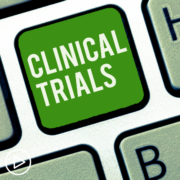What Should You Know About Myeloma Treatment Options?
What Should You Know About Myeloma Treatment Options? from Patient Empowerment Network on Vimeo.
Dr. Peter Forsberg outlines options in the myeloma treatment toolkit, including targeted therapies, chemotherapy, immunotherapy, and combination approaches —and explains how the recovery process from stem cell transplant has improved.
Dr. Peter Forsberg is assistant professor of medicine at the University of Colorado School of Medicine and is a specialist in multiple myeloma. More about Dr. Forsberg here.
Download Program Resource Guide
See More From The Pro-Active Myeloma Patient Toolkit
Related Resources:

|

|

Myeloma Treatment Decisions: What’s Right for You Resource Guide |
Transcript:
Katherine:
Would you walk us through the currently available myeloma treatment approaches and who they might be right for?
Dr. Forsberg:
At this point, we’re lucky that we have a much broader toolkit to treat myeloma than we have had in the past. Myeloma is one of the successes in modern oncology in that way. At this point, we have a number of targeted therapies. Some of those are pill-based options, some are injections or infusional medicines. We have some immunotherapies, which are things like monoclonal antibodies, which help to work.
We use some conventional or older fashioned chemotherapy, often lower doses and as part of combinations. And steroids. Steroids are always the medicine that is one of the backbones of our combinations. In myeloma, we do often use combinations. So, it’s usually a mixture of targeted therapies. Sometimes immunotherapies or chemotherapies.
As well as steroids to try to treat the myeloma. And some of the considerations are, which combination makes the most sense. Are there other medical problems or disease related factors like disease aggressiveness that may influence which ones we wanna choose or how many. Also, is a three-drug combination the right fit or is a four or a two drug the right. And it does continue to evolve.
Our options and our ability to use multi-agent regimens has continued to improve as we’ve gotten better and better therapies that’re well tolerated and that allow us to use really active combinations, even in patients who may have substantial other medical problems. So, I think it’s been something that continues to evolve over time and will continue to evolve. But the good news is that it’s been an issue of just how to incorporate more and better options.
How do we bring these good new tools into the mix as early as is appropriate? To control the myeloma in really substantial ways. And again, as I mentioned, the question of the role of stem cell transplant continues to be an important one. That is a way for us to still use older fashioned chemotherapy at a high dose to help to achieve a more durable remission. But usually, the way that we parse through these targeted immunotherapies and chemotherapies, is something that may be individual.
Although, we have some broad principals that help guide us for how we manage patients across different types.
Katherine:
How do you decide who stem cell transplant might be right for?
Dr. Forsberg:
The good news in the United States is that we’re able to be fairly broad in terms of our consideration of stem cell transplant. There is no age restriction above which it’s not. We’ve gotten better and better at supporting patients through stem cell transplant. We have better medicines to deal with potential toxicities. And so, patients do better and better in going through transplant. But it is still an intensive treatment modality. So, in considering it, it is an option for a large portion of myeloma patients at diagnosis. After we get the myeloma under control. But the decision remains an individual one. Some patients may prefer to defer stem cell transplant until a second line therapy or later.
Whereas others feel very comfortable moving forward with it in the first-line setting. I would say that it is certainly something that we try to demystify for patients. It can sound a little bit intimidating, certainly because it is a little more intense and requires more support. But it is something that we have gotten quite good at navigating patient and supporting them through.
Katherine:
What about maintenance therapy, how does that fit in?
Dr. Forsberg:
Following initial treatments to get the myeloma under control, whether that includes stem cell transplant or not. Usually we transition into a maintenance therapy. Maintenance therapy is a way for us to sustain control or remission of the myeloma. And make that longer lived. So, what we use for maintenance may be different patient to patient. But it is a important part of our treatment approach for many patients.
Katherine:
Are some therapies less intense than others, and what are some possible side effects of those?
Dr. Forsberg:
So, certainly there are treatments with varying degrees of intensity or potential toxicities. The good news is that as we’ve gained more and more treatment options, we’ve also gotten better at using the ones we have had for a while now to minimize some of their toxicities. So, by adjusting dosing schedule and routes of administration, we’ve gotten better at fine tuning the tools we have toward minimizing those toxicities.
So truthfully, many myeloma patients after you start treatment, actually feel better than before they started chemotherapy because the myeloma itself is a destructive process and the treatments are quite often well tolerated. That being said, certainly over time, treatment related side effects often emerge. Some of the treatment toxicities may cause some challenges in terms of managing patients through their myeloma process. But usually, those can be overcome. Even if that means needing to adjust the treatment protocol.
Adjust doses, change medicines. And so, while there are varying degrees of intensity, we’re usually able to find the right balance for any given patient to still have a very active anti-myeloma regimen while trying to be very cognizant of potential treatment toxicities and taking steps to mitigate that.



